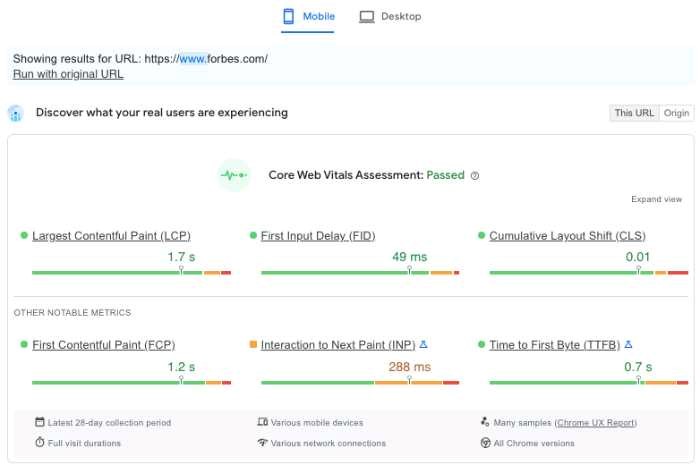In today’s fast-moving SEO landscape, a lot of vocabulary and technicalities are introduced almost every day. It can be challenging to keep up with the latest trends and changes, let alone understand them and effectively use them. However, white hat SEO techniques are here to stay and will definitely help your website rank better in SERPs if used correctly.
You probably have heard a lot about white hat SEO but are unsure what it actually is. White hat SEO simply refers to using ethical and approved methods to improve your website’s ranking in SERPs. These techniques include optimizing your website for certain keywords, creating high-quality content, and building backlinks from authority sites.
In comparison, black hat SEO techniques go against Google’s guidelines and can get your website penalized or even banned from the search engine. You should avoid using black hat SEO methods at all costs as they can do more harm than good to your website.
Before diving deep into white hat SEO techniques, let’s look at white hat SEO and its benefits.
What Exactly Is White Hat SEO?
As we’ve mentioned before, white hat SEO is using techniques that align with Google’s guidelines to improve your website’s ranking. These methods may take a bit longer to show results, but they are more sustainable in the long run and will not get your website penalized.
Some white hat SEO techniques include:
- Optimizing your website for certain keywords
- Creating high-quality, original content
- Building backlinks from authority sites
- Improving website usability and user experience
- Promoting your website on social media platforms
White Hat SEO vs. Black Hat SEO
Now that we know what white hat SEO is, let’s look at the difference between white hat and black hat SEO.
White hat SEO methods follow Google’s guidelines and focus on providing a better user experience. On the other hand, black hat SEO techniques go against Google’s guidelines and are only concerned with improving website ranking.
Here is a more detailed list of the differences between white hat and black hat SEO:
- White hat SEO methods are sustainable and will not get your website penalized. Black hat SEO techniques are not sustainable and can get your website penalized or banned from Google.
- White hat SEO techniques take longer to show results, but they are more effective in the long run. Black hat SEO methods may show results more quickly, but they will not last in the long run.
- White hat SEO focuses on providing a better user experience. Black hat SEO does not focus on providing a better user experience.
Why Should You Use White Hat SEO?
You should use white hat SEO for your website for many reasons. For one, white hat SEO techniques are sustainable and will not get your website penalized by Google. This means you can continue using these techniques without worrying about your website being banned from the search engine.
Another reason to use white hat SEO is to provide a better user experience. This is important because Google wants to provide its users with the best possible results. If your website provides a good user experience, it is more likely to rank higher in SERPs.
Lastly, white hat SEO techniques may take longer to show results, but they are more effective in the long run. This is because white hat SEO techniques are more sustainable and will not get your website penalized.
Importance of Evergreen White Hat SEO Techniques
Google’s algorithm is constantly changing, so what works today may not work tomorrow. This is why it’s important to use evergreen white hat SEO techniques that are sustainable and will not get your website penalized.
Many businesses focus on short-term results and use black hat SEO techniques to improve their website ranking. However, this is not a sustainable strategy as it can get your website penalized or even banned from Google.
Instead, you should focus on using white hat SEO techniques that are evergreen and will not be affected by Google’s algorithm changes.
White Hat SEO techniques are like an investment; they may take longer to show results, but they are more effective in the long run.
Evergreen White Hat SEO Techniques for Assured Consistent Results
White hat SEO is the holy grail of SEO. Just like that understanding, the importance of white hat SEO is only the tip of the iceberg. What really counts is creating a clear-cut SEO strategy and working to implement it.
Here are some top evergreen white hat SEO tips that are essential for any successful organic SEO strategy:
1. Creating Valuable Content for Readers
SEO is all about creating content that is valuable to your readers. This means creating informative, well-written content relevant to your niche. If you can provide value to your readers, they are more likely to share your content and link to it.
Not only will this help improve your website ranking, but it will also help increase traffic to your website.
While creating content for your website, you need to ensure that it is:
- Informative & useful
- Unique; different from other websites
- Credible
- High-quality
- Engaging
If you can make your content meet all of these criteria, you are well on creating valuable content that will help improve your website ranking.
Many businesses make the mistake of thinking they need to create a lot of content to rank higher in SERPs. However, this is not the case. You don’t need to create a lot of content; you just need to create high-quality, engaging content that is valuable to your readers.
Make sure that your content is people-friendly first, and search engine-friendly second.
Creating content for the sake of it will not help you rank higher in SERPs or improve your website traffic. In fact, it could even hurt your ranking as Google may penalize you for keyword stuffing or other black hat SEO techniques.
Your content should aim to:
- Solve a problem
- Provide value
- Entertain
- Educate
- Inspire
Do not create content for the sake of it; make sure that it is something your readers will actually want to read.
For search engines to index your content, you must ensure that it is well-written and error-free. You can do this by using a grammar checker like Grammarly or hiring a professional editor.
Optimize your content for SEO while making it easy to read and understand.
Content optimization is more than just using the right keyword density; it’s also about making your content easy to read and understand. Your content should be well-written and error-free.
Making your content easy to read and understand is good for SEO and will also help keep your readers engaged. If your content is difficult to read, people will likely give up and go to another website.
You should also break up your content into smaller paragraphs and use subheadings to make it easy to navigate. Use images, infographics, and videos to break up your text and make it more visually appealing.
Your website should be easy to navigate, and all your content should be easy to find. If people can’t find what they’re looking for on your website, they are likely to leave and go to another website.
Avoid keyword stuffing
It is a common misconception that you need to stuff your content full of keywords for it to rank higher in SERPs. However, this is not the case and doing this will likely result in your website being penalized by Google.
When it comes to on-page SEO, less is more. Use keywords sparingly and only use them when they are relevant to the content.
Focus on creating high-quality, engaging content relevant to your target audience.
Use keyword research to find the right keywords to use in your content, but don’t overuse them.
Keyword research is a process of finding and using the right keywords to optimize your content. The aim is to find relevant keywords for your business and target audience.
There are several different ways to do keyword research, but the most important thing is to ensure that you are using the right keywords for your business.
You can use several tools to help you with your keyword research, including Google AdWords Keyword Planner and Moz Keyword Explorer.
2. Providing Optimal User Experience
According to Google, user experience is one of the most crucial ranking factors.
User experience is how easy and enjoyable it is to use your website. It includes factors such as website design, navigation, content, and speed. Creating a positive user experience is essential if you want people to stay on your website and continue using it.
There are several things that you can do to improve the user experience on your website, including:
- Make sure your website is mobile-friendly
- Improving website speed and performance
- Making it easy to navigate your website
- Creating well-written and error-free content
- Ensuring your website is secure
Mobile-friendliness is the key
Google has stated that mobile-friendliness is a ranking factor, so it’s important to ensure that your website is optimized for mobile devices.
With more and more people using mobile devices to access the internet, it’s important to ensure that your website is designed for these devices. Mobile-friendliness includes factors such as responsive design, tap targets, and content formatting.
You can use Google’s Mobile-Friendly Test tool to see if your website is mobile-friendly.
Improving website speed
Website speed is how long it takes for your website to load. It’s an important factor in user experience as people will likely leave your website if it takes too long to load.
There are a number of things that you can do to improve website speed, including:
- Optimizing images
- Using a content delivery network (CDN)
- Enabling browser caching
- Minimizing HTTP requests
- Reducing the size of your HTML, CSS, and JavaScript files
You can use Google’s PageSpeed Insights tool to see how fast your website is and get recommendations on improving website speed.
Website security
Security is another important factor in user experience. People are more likely to trust and use a secure website.
People don’t want to risk their personal information, so it’s important to ensure that your website is secure. You can do this by using a secure socket layer (SSL) certificate.
An SSL certificate is a type of security that encrypts information and keeps it safe from hackers. Having an SSL certificate is important if you’re collecting sensitive information from users, such as credit card numbers or personal information.
You can use Google’s Security Checkup tool to see if your website is secure and get recommendations on improving security.
Website compatibility on different browsers
It’s important to ensure that your website is compatible with different browsers, as people are using various browsers to access the internet.
There are a number of different things that you can do to make sure your website is compatible with different browsers, including:
- Testing your website on different browsers
- Using a cross-browser testing tool
- Making sure your website is designed for different screen sizes
You can use Google’s Browser Compatibility Check tool to see if your website is compatible with different browsers.
3. Optimizing Your On-Page SEO
On-page SEO is critical if you want your website to rank high in search engine results pages (SERPs). Without it, your website will be lost among the millions of other websites out there.
Here are a few important parameters that are looked at by Google search bots while determining rankings:
Title tag: The title tag is the most important on-page SEO element. It’s the first thing people see when searching for something on a search engine.
Make sure that your title tag is:
- Relevant to the page content
- Unique
- Attention-grabbing
- within 60 characters
Meta description: The meta description is the second most important on-page SEO element. The brief description appears under your title tag in the search results.
Make sure that your meta description is:
- Relevant to the page content
- Unique
- Within 155 characters
Header tags: Header tags structure your content and make it easy to read. They are also an important on-page SEO element.
Keywords: Keywords are the words and phrases people use to search for something on a search engine. You should include keywords throughout your content, including title, header tags, and meta description.
Internal links: Internal links are the links that go from one page on your website to another page on your website. They help search engines index your website and improve the ranking of your pages.
External links: External links are the links that go from your website to another website. They show search engines that your website is relevant and trustworthy.
There are various other on-page SEO techniques that you can use to improve your website’s ranking, such as:
- Using social media buttons
- Adding an XML sitemap
- Using Schema markup
- Creating a robots.txt file
If you want to learn more about on-page SEO, we have an in-depth guide that covers everything you need to know.
4. Don’t Resort to Black Hat SEO Ever
Black hat SEO is a type of optimization that goes against the guidelines set by search engines. It’s considered unethical and can get your website banned from search engines.
Some common black hat SEO techniques include:
Keyword stuffing: Keyword stuffing is the practice of cramming as many keywords as possible into your website’s content. It’s considered to be black hat SEO because it’s an attempt to manipulate search engine rankings.
Hidden text and links: Hidden text and links are elements that are not visible to users but are visible to search engines. They’re usually used to stuff keywords into a website’s content.
Cloaking: Cloaking is the practice of showing one version of a website to users and another version to search engines. It’s considered a black hat because it attempts to manipulate search engine rankings.
Article spinning: Article spinning is the practice of taking a single article and rewriting it multiple times. The resulting articles are usually low-quality and full of grammar mistakes.
Paid links: Paid links are links that are bought or sold to manipulate search engine rankings. They’re considered black hats because they’re an attempt to manipulate search engine rankings.
If you resort to black hat SEO techniques, your website will be penalized by search engines, and you’ll see a drastic drop in your website’s traffic.
Always keep in mind that SEO is like fighting a war. You might win a battle with black hat techniques, but you’ll lose the war eventually.
How a Reputed White Label SEO Partner Can Help You
When it comes to white label SEO, it’s important to partner with a reputable agency. A reputable white label SEO partner can help you in various ways:
- They have a team of SEO experts who can help you with all aspects of SEO, from keyword research to on-page optimization to link building.
- They provide white label SEO services, meaning you can put your own brand on their services and sell them to your clients.
- They have a proven track record of helping their clients improve their website’s ranking on search engines.
- They can help you scale your white label SEO business by providing you with a team of experts and the latest tools and resources.
If you’re looking for a white label SEO partner, we can help. We’re a white label SEO agency that provides all the services you need to grow your white label SEO business. Contact us today to learn more.











One comment
Verdie Hilll
October 31, 2022 at 1:16 pm
I loved all the tips you’ve mentioned. And yes, never resort to black hat SEO if you don’t want your website to suffer. Period.
Comments are closed.